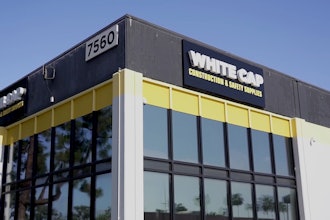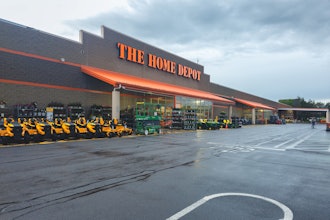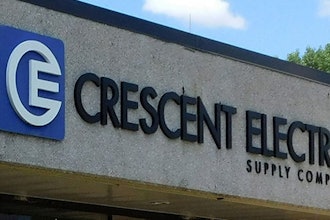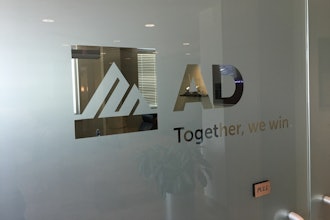WHITE PAPER
Best Practices for Managing Packaging Specifications
What is a spec?
While everyone might have their own idea of the definition of a specification, if one looks to any
dictionary, you’re likely to find something along the lines that a specification is a detailed
instruction of work to be done and/or the materials to be used to complete the job. Additionally,
some typical synonyms to specifications include instructions, guidelines, parameters,
requirements or conditions.
What we should agree upon is that specifications are required for nearly every product that is
developed, grown or manufactured. Whether it’s a box, bag, bottle, product label, chemical
formula, car part, or even an avocado – it has any number of specifications that are used to
ensure it is grown or built to achieve the desired quality standards and make it into the
customers’ hands. Specifications are the critical DNA across every stopping point along the
value chain ensuring that companies succeed in delivering your product to the market and get
paid for it.
If we agree that nearly everything grown, produced or manufactured needs a specification, the
numbers of specs is enormous – too large for this paper. So, we’ll focus on packaging
specifications due to the custom nature of each company’s packaging. However, the discussion
presented here has relevancy to all types of specifications and therefore means the savings and
efficiencies achieved with the ability to intelligently share and manage specifications is
ubiquitous.
Best Practices for Managing Packaging Specifications www.specright.com 949.386.7367 [email protected] 1
▪ BOMs
▪ Dimensions
▪ Material
▪ Performance
▪ Graphics
▪ Vendor Information
▪ Inbound Logistics
▪ Outbound Transportation
▪ Cost Analysis
▪ Quality Reports
▪ Inventory
▪ Revision History
The packaging market is expected to grow to around $1 trillion by 2020, according to the
research firm, Smithers Pira, making up around 200+ million packaging SKUs around the world.
With 60 million in the United States alone – this number is growing daily, as is the complicated
process of sharing specs and managing this data. This growing complexity, desire for
transparency, and increasing rate of change impacts the entire value chain.
The depth of information required now must include a much larger cross-section of information –
from raw material sourcing and manufacturing environment details to the core DNA of the
component’s structure, material, and performance.
Packaging specifications are a critical part of the bill of materials (BOM) necessary to ensure
delivery of goods. Packaging specifications should consist of the following:
2
A typical Bill of Materials (BOM) Listing:
▪ Raw Materials
▪ Product Components
▪ Assemblies, Sub-assemblies or Processed
Components
▪ Purchased Components
▪ Primary Packaging
▪ Secondary Packaging
▪ Tertiary Packaging
▪ Labor
▪ Unitizing Information
▪ Shipping and Loading
Historically, there has been no common method,
technology solution, or platform for handling packaging
specifications and they typically end up being managed
through disparate systems and solutions – often Excel and
PDF documents shared inefficiently through emails. ERP &
PLM systems are not built for SKU and specification
management. Document control systems, generally PDF-
based, are not comprehensive, easy to search or enable
intelligent data analysis.
Best Practices for Managing Packaging Specifications www.specright.com 949.386.7367 [email protected]
Because of the lack of standard systems, it is a sad reality that companies typically manage the
symptoms of problems and accept them as the normal course of business and acceptable
“institutional” costs. They add people, layer on processes, create task forces, restructure, and
insert software not designed for a specific purpose hoping that it can be modified to address the
business needs and produce results.
3
Top 10 Best Practices for Efficient Specification Management
▪ Include all stakeholders in your supply chain
▪ Clean the data prior to storing it
▪ Use a logical item naming/numbering system
▪ Utilize standardized templates
▪ Require key attributes (but don't require too many)
▪ Map our your approval processes & automate them
▪ Track comprehensive revision history
▪ Attach all applicable documents (drawings, certifications, etc.)
▪ Conduct periodic audits with your suppliers to confirm spec accuracy
▪ Make the information searchable and easy to find
With many companies managing their packaging specifications in systems that are not
specifically designed to manage specs, the result is a proliferation of SKU’s, higher costs, greater
business risk, and inefficiencies throughout the value chain – which ultimately is driving costs
higher and higher for every stakeholder. And, the answer is not to simply continue to demand
price reductions from suppliers. Solving the root cause and ultimately decreasing costs across
the entire value chain requires a new way of approaching specifications to ensure their accuracy.
Compounding the complexities already found within the
value chain is consumers’ ever-increasing need for
transparency and demanding to know, not only what is in
their products, but also where they came from and who
made them. Today’s disparate systems make it difficult or
nearly impossible to implement traceability across a value
chain. A simple review of the enormous number of FDA
recalls due to not identifying allergens shows how difficult it
is to maintain accurate specs from multiple suppliers and
convey those specs accurately and timely on a product
packaging label so consumers are aware of ingredients in
their food.
Best Practices for Managing Packaging Specifications www.specright.com 949.386.7367 [email protected]
Accurate specs enable the value chain to function faster and effectively, while inaccurate
specifications impact logistics, transportation, speed to market, responsiveness to recall/failure,
and the very foundations or business. etc.
The following table demonstrates enormous cost reductions and efficiencies that can be
achieved when packaging specifications are shared/managed in a centralized platform by
stakeholders across the entire value chain.
4Best Practices for Managing Packaging Specifications www.specright.com 949.386.7367 [email protected]
Value Chain Stakeholder Impact of accurate, easy to share, manage, audit specs
Company-wide
Decreased admin costs due to reduction of converting
file content
Increased efficiency with one system to learn - a single
point of truth
Faster time to market when everyone "speaks" the
same language
Fully managed specs and BOMs reduce delays by removing
confusion between departments creating opportunity for
faster time to market
Sales, Marketing, R&D, and Purchasing are all working
from the same product spec set
Workflows enable project managers to monitor progress
and reduce project duration costs
Dramatically reduced risk of lost revenues due to recall with
accurate specs easily shared across suppliers/sup-suppliers
5Best Practices for Managing Packaging Specifications www.specright.com 949.386.7367 [email protected]
Value Chain Stakeholder Impact of accurate, easy to share, manage, audit specs
Sales & Marketing
Sales and marketing have the same up-to-date
specs as everyone in the organization
Access to specification is much closer to the team's fingertips
Drastically reduce design and cycle time for packaging and
product development
Streamlined/decreased admin costs with ability to
accurately search existing specs for appropriate packaging.
Reduction of SKU duplication eliminates the creation of
unnecessary SKUs and focuses efforts on the right SKUs
Packaging Engineering
Efficient reporting:
• Packaging Waste
• Materials Usage & Optimization
• Like Size SKU Consolidation
Marketing/Branding
Brand equity retained/protected
Workflows/approvals ensure the latest
approved artwork versions are used
Common storage/language ensures marketing specs are
used throughout the company
6Best Practices for Managing Packaging Specifications www.specright.com 949.386.7367 [email protected]
Value Chain Stakeholder Impact of accurate, easy to share, manage, audit specs
Product Documentation Everyone knows what is current or obsolete
Easily recognize and take action to reduce packaging
needs and maintain quality
Accurate, easy to find Inbound/Outbound logistics
information
Dynamic reporting on recycled content usage- faster
sustainablitlgy reporting
Touch it once and ship it right leads to lower operational
and freight costs
Logistics
Seamless search/navigate primary packaging spec to pallet
to truck pattern means dramatic reduction of logistics
admin costs/personnel costs
Optimized specs mean optimized logistics, lowering costs
Ability to view palletization instructions, etc. real-time to
identify optimization and cost-savings opportunities
Reduced handling costs due to reduced admin work
Sustainability
7Best Practices for Managing Packaging Specifications www.specright.com 949.386.7367 [email protected]
Value Chain Stakeholder Impact of accurate, easy to share, manage, audit specs
Purchasing
Dramatically reduced admin time needed to prepare
packaging bidding/RFQ
Increased flexibility to secure multiple bids from
multiple suppliers
Ability to develop checkpoints based on business rules
to ensure standards are met
Accurate, version-controlled documents lead to a reduction
of purchasing errors/admin
Faster root cause analysis with approval history, traceability
for changes/revisions
Quality Assurance/Control
Reduced risk of recall due to improper labeling reduces risk
of thousands in lost sales revenues
Develop checkpoints based on business rules to
ensure standards are met
Reduction of time and resources required performing audits
means more audits can be performed in a faster timeframe
Easy to communicate/request audits from suppliers
Dramatically reduced time to transition to/on-board
new supplier(s)
8Best Practices for Managing Packaging Specifications www.specright.com 949.386.7367 [email protected]
Value Chain Stakeholder Impact of accurate, easy to share, manage, audit specs
Accounting/Invoicing
Reduction of shipment delays and associated admin
costs with accurate packaging spec information
Faster time to invoice
Optimized delivery/production based on supplier specialties
for related specs reduces costs and increases revenues
Reduction of supplier errors caused by obsolete/inaccurate
documents
Increased cooperation/reduction of wasted time/efforts
when suppliers have clear specs/know the expectations
Suppliers
Accurate shipments to customers increase efficiency,
reduce costs, and create happy customers
Happier Customers
ABOUT SPECRIGHT
Specright is a specification management company with a vision to leverage specification
expertise and cloud technology to improve the way specifications are shared, analyzed and
audited. The Specright platform was created for packaging specifications, and has been
developed to manage ingredients, formulas, and finished goods.
Our customers operate in food & beverage, produce, manufacturing, FMCG/CPG, medical, or
any industry reliant on accurate specifications. We offer on-boarding, testing and auditing
services to ensure products and components meet specifications. Founded in late 2014,
specright is headquartered in Irvine, California.
ABOUT THE AUTHOR
Matthew Wright, CEO & Founder of Specright
Matthew Wright has over 25 years of experience in
packaging and has held various operational and
management roles with International Paper and Temple
Inland. His last position in a major paper and packaging
company was Vice President for Temple Inland, running
a $500m business unit. Known for being the
entrepreneurial manager within Fortune 100 companies,
he ran a unique packaging business focused on point-
of-purchase, automotive, agriculture, food and
beverage. He later invested in a private packaging
company and over the 2 years of his management, the
company doubled revenue and increased in value
before being acquired by New Indy Containerboard in
late 2016. Matthew developed the concept of Specright
from years of experience seeing how the lack of a
standard way of sharing specification data between
companies leads to inefficiencies and waste. He is now
providing a revolutionary solution creating massive cost-
savings across all facets of the packaging value chain.
9Best Practices for Managing Packaging Specifications www.specright.com 949.386.7367 [email protected]
Best Practices for Managing Packaging Specifications
Any dictionary will say something along the lines that a specification is a detailed instruction of work to be done and/or the materials to be used to complete the job. If we agree that nearly everything needs a specification, the numbers of specs is enormous – too large for this paper. So, we’ll focus on packaging specifications.
Latest in Home
Fastenal’s Daily Sales Jump Nearly 12% in August
September 5, 2025
BSC Industries Acquires Pennsylvania Distributor
September 5, 2025
Motion Parent Announces Agreement with Activist Investor
September 4, 2025






















